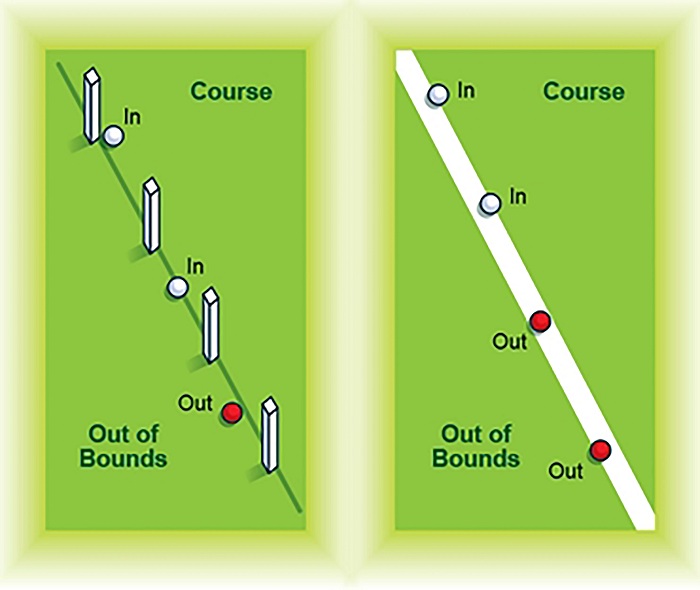Out of bounds

If your ball is definitely out of bounds, you must play another ball from where you last played under penalty of stroke and distance (Rule 27-1), whether from the tee or fairway. So if it was your tee-shot that had gone OOB, you would now be playing three off the tee.
If there is some doubt as to whether or not the ball is out of bounds make sure you declare your next shot a provisional ball. If you fail to do so, you won’t be able to continue with the original ball if it is found in bounds.
Where out of bounds is defined by white stakes or a fence, the out of bounds line is the nearest inside points at ground level.
When a line on the ground is used, the line itself is out of bounds. However, a ball is deemed in bounds still even if only a small part of it lies on the course side of the boundary line.
If white stakes are used at intervals, the out of bounds line is the direct line from one stake to the next.
Important out of bounds points:
You may stand out of bounds to play a ball that is lying in bounds.
The out of bounds line extends vertically upwards, so if your ball is lodged in a tree on the boundary, you will have to make your judgment on that basis.
Whatever is used to define out of bounds is deemed to be fixed and is not classed as an obstruction. This means that you get no free relief if they impede your stance, backswing or follow-through, and white out of bounds stakes may not be removed to facilitate your next shot.
Some courses have ‘internal out of bounds’ for reasons of safety or to ensure a hole is played in the way in which it was designed rather than via another potentially easier route down another fairway.















